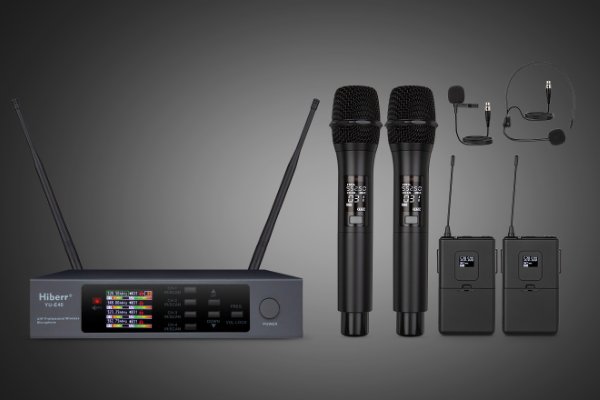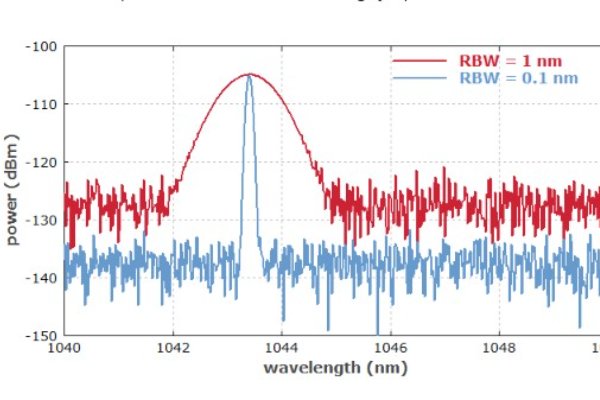Recent Posts
-
How to Reduce Wireless Microphone Background Noise
Wireless microphones are a popular choice for a variety of events, from speeches and church services to performances and presentations. However, background noise can often be a major issue. If you're struggling with unwanted noise, here are some effective tips to help you reduce wireless microphone background noise and improve your audio quality.
03/01/2025
-
Hiberr Microphones: Leading the Charge in Modern Audio Solutions
Microphones are more than just tools—they're instruments of communication, creativity, and collaboration. Hiberr, with its innovative designs and commitment to quality, is poised to redefine the audio landscape for the digital age.
10/08/2023
-
Understanding the Evolution and Importance of the Wireless Microphone
Understanding the Evolution and Importance of the Wireless Microphone in Modern Times
10/06/2023
-
Understanding Microphone Differences: Hosts vs. Singers
When choosing a microphone, understanding its primary use is essential. The difference between microphones tailored for hosts and those for singers is quite stark.
09/28/2023
-
What affects the receiving distance of uhf wireless microphone? How to solve?
Long-distance wireless microphone systems are pivotal in various events and settings. Their performance, however, can be affected by a myriad of factors. Understanding and addressing these factors can optimize your microphone's receiving distance. Here's a breakdown:
09/23/2023
-
What is the signal-to-noise ratio of a microphone?
The Signal-to-Noise Ratio (SNR) of a microphone measures the ratio between the desired audio signal and the undesired background noise inherent in the microphone. Essentially, it quantifies how much clearer the desired sound is compared to the background noise. It's typically expressed in decibels (dB). In the context of microphones, SNR often refers to the difference between the microphone's sensitivity and its self-noise or equivalent noise level.
09/22/2023
How Should Pastors Choose Wireless Microphones In Churches
Selecting the right wireless microphone for a pastor in a church setting requires careful consideration of various factors to ensure clear audio reproduction without any interference or dropouts. Let's analyze each of the provided dimensions:
Clarity:
Frequency Response: The church wireless microphone should have a good frequency response to reproduce the human voice accurately. Most human speech lies between 85Hz to 255Hz, but capturing a wider range ensures capturing nuances and harmonics.
Signal-to-Noise Ratio (SNR): A higher SNR indicates a clearer signal. It is essential to choose a mic with a good SNR to minimize background noise.
Interference: The system should operate on a frequency that has minimal interference in your location. Modern wireless systems often have frequency agility or auto-scan features to find the cleanest channel.
Feedback Inhibition:
Directionality: Lavalier or headset mics with cardioid or hyper-cardioid patterns will pick up sound primarily from one direction, reducing the chance of feedback from the sound system. This is especially useful in church settings where speakers may be close to the pastor.
Placement: Proper placement of the microphone can prevent feedback. For instance, lapel mics should be placed close to the mouth but not so close as to pick up plosive sounds.
Use Distance:
Range: Depending on the size of the church, the wireless system should provide a sufficient operational range. This range should cover the pastor's movement area and any additional distance between the transmitter and the receiver setup.
Line-of-Sight: While many modern systems work well without direct line-of-sight, ensuring a clear path between the microphone's transmitter and its receiver can reduce dropouts.
Antenna Placement: Proper placement and, if needed, the use of external antennas can enhance the signal quality and increase the effective range of the system.
Wireless Transmission Method:
UHF vs. VHF: Historically, UHF (Ultra High Frequency) has been preferable for professional applications due to its broader frequency range, which provides more channels and tends to have fewer interference issues than VHF (Very High Frequency).
Digital vs. Analog: Digital systems can provide clearer sound and are more resistant to interference. They convert the audio signal into a digital format, transmitting it without the typical noise or degradation found in some analog systems.
Frequency Hopping: Some modern systems use frequency hopping to prevent interference. If the system detects interference on a channel, it will 'hop' to a clean channel, ensuring a consistent connection.
In summary, when the pastor in the church is choosing a wireless microphone system, they should prioritize clarity by considering frequency response and SNR. They should also ensure the system has feedback inhibition capabilities through the mic's pattern and its placement. The operational range should be sufficient for the pastor's movement




